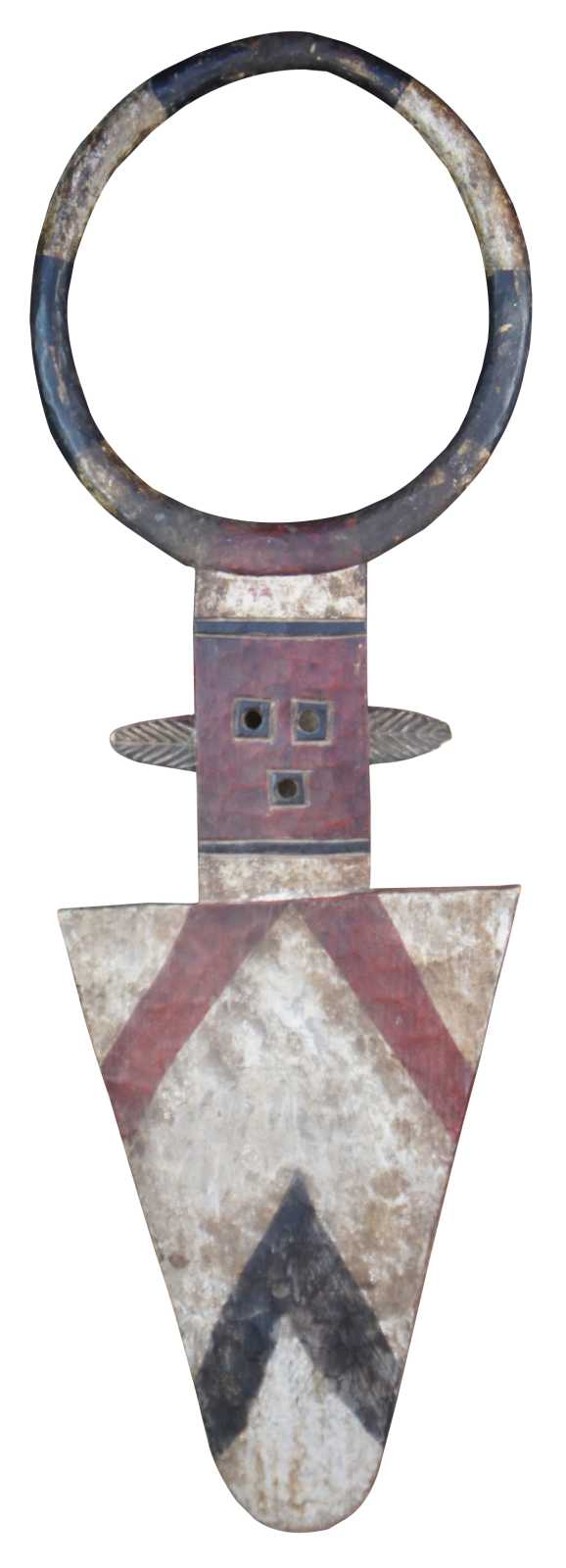
Shipping:
Free Shipping Included
Delivery:
Estimated 2-15 Business Days
Payments:
Credit Card, Check, Cash, PayPal, Apple Pay, Venmo
Returns:
30 Days 100% Money Back Guarantee, Buyer Pays Return Shipping
Description
Mid Century carved African Nefana Bedu plank mask sculpture. This wooden plank mask is large and geometrical in form. It was worn over the face with its extremities towering way above the head. The lower part of the mask is spade-shaped and pierced at the center with three holes to allow the wearer to see out and with a third hole for the mouth. Its crest is surmounted by a large circular horn or disk. This group of masks are known as Bedu by the Nafana people who make and use them for ritual use.
Purchased from the collection of Paul Gotay. Paul is a recognized African art collector and Defense Attorney out of Nevada. His collections have been displayed in Salt Lake City as well as prominent museums and galleries across the US.
Such plank masks are among the largest masks in Africa. The form of the Bedu mask represents a mythical buffalo-like animal that plays an important role in the New Year’s celebration in the Bondoukou regions of north-west of Ghana and the north-east of Côte d’Ivoire. Bedu masquerade is the focus of the month-long New Year’s celebrations, the winter solstice festival called Zaurau, where a pair of dancers perform with masks, one male and the other female. The gender of a mask is readily identified: male masks often have horns while female masks incorporate a large disk.
Bedu masks and their performances represent and reinforce good social values: community harmony, health, fertility and good crops.
Bedu masks appeared in the early twentieth century – they are first recorded in the 1930s. They were similar in form to the Sakrobundi masks of the nineteenth century, which had been linked to an anti-witchcraft cult. Like the Sakrobundi masks, the Bedu masks belonged to one of the many secret societies, for which membership typically required initiation. During the initiation, young boys had to endure physical tests and an apprenticeship in secret knowledge of the supernatural. Sakrobundi and the secret societies were banned by the colonial government because they were seen as a threat to their authority.
The Nafana are a Senufo people living in the West Africa, north-west of Ghana and the north-east of Côte d’Ivoire, in the area east of Bonduku. They number about 45,000 and they speak the Nafaanra dialect within the Senufo language group.
Condition
Good antique condition, wear and distressing commensurate with age and use, splitting, edge wear, paint loss.
Dimensions
25" x 74" x 4"
You May Also Like